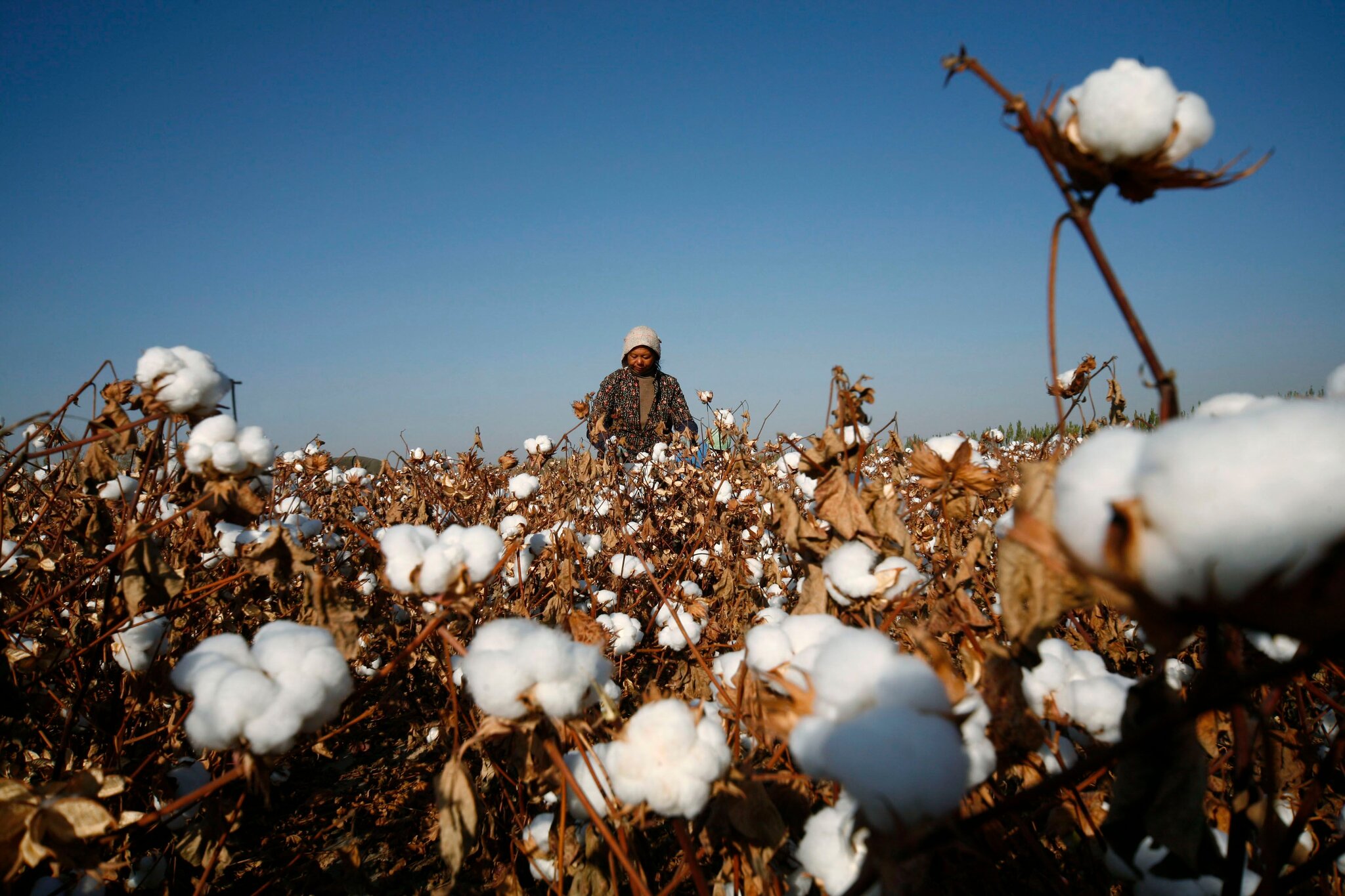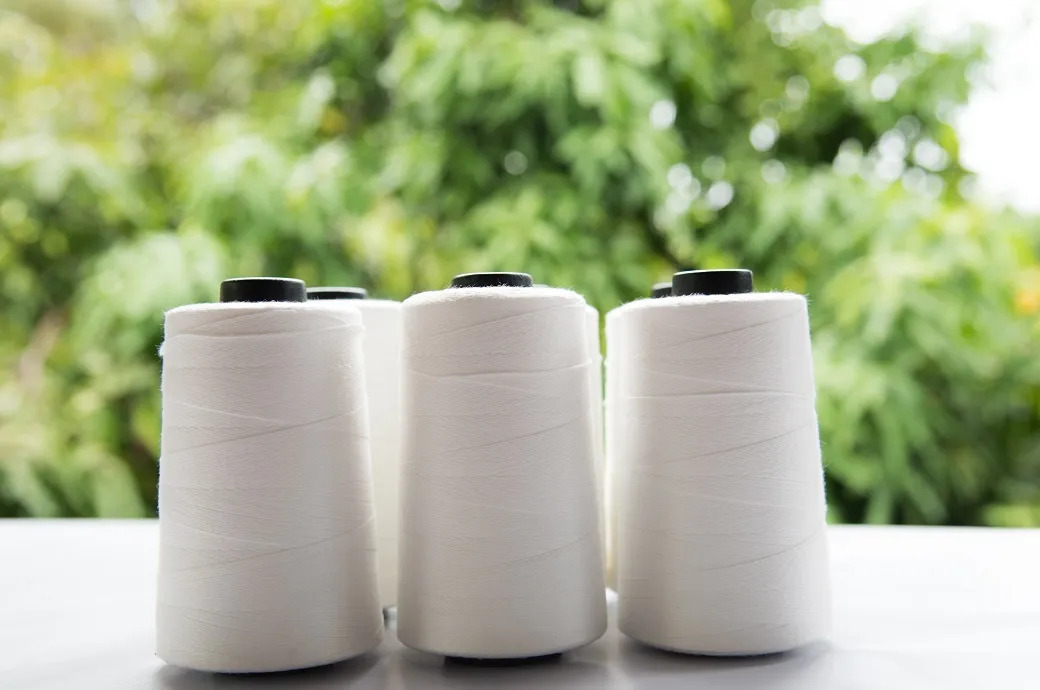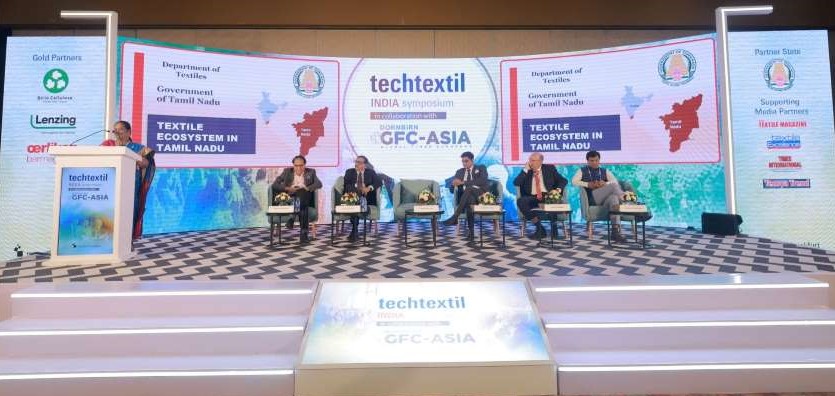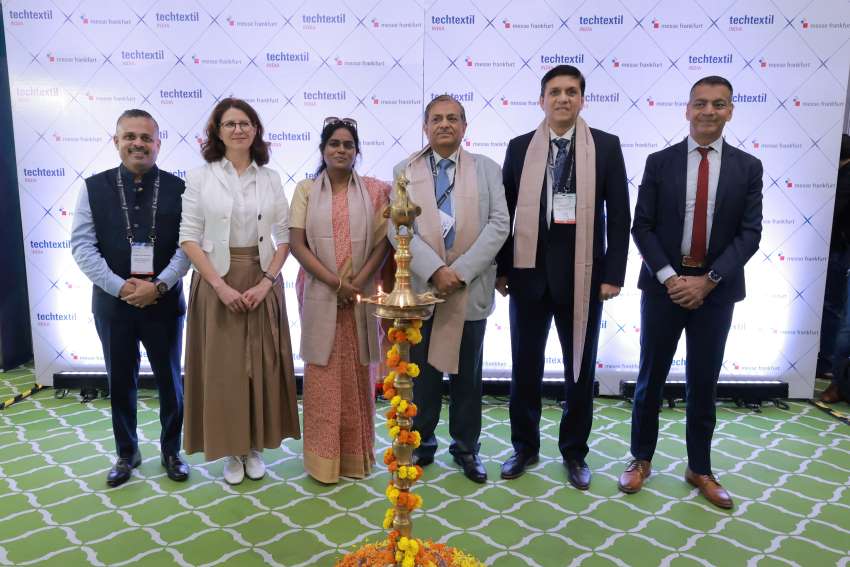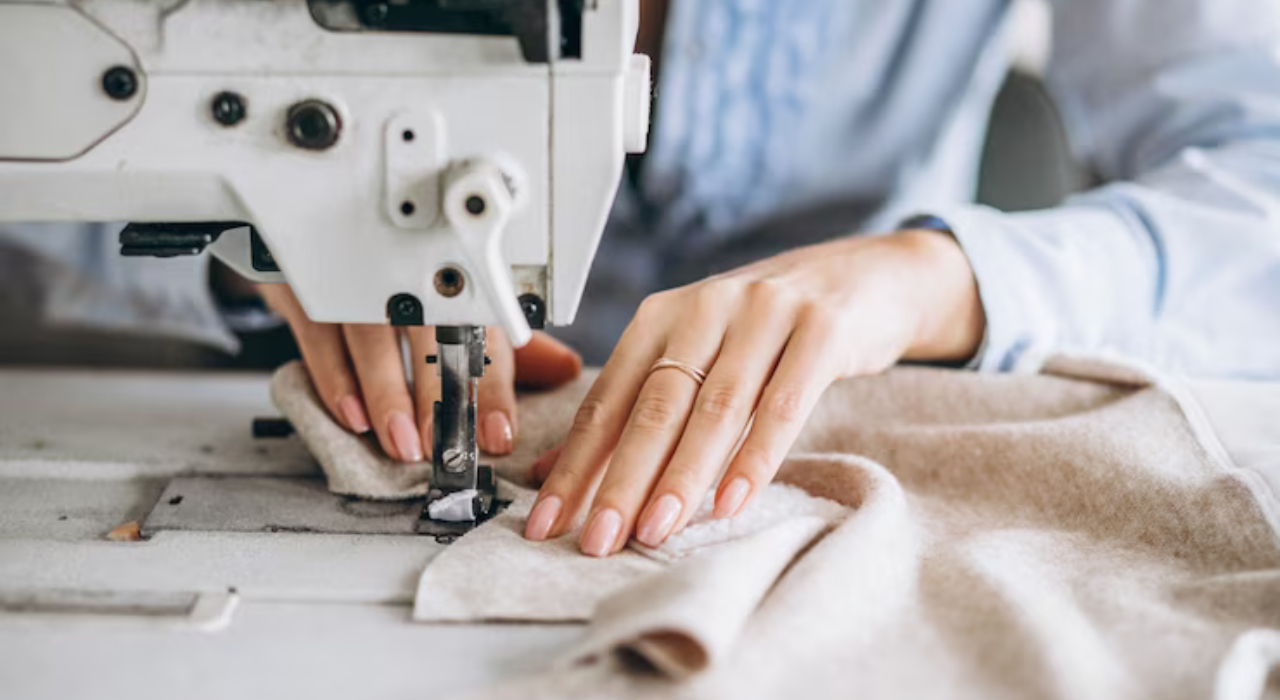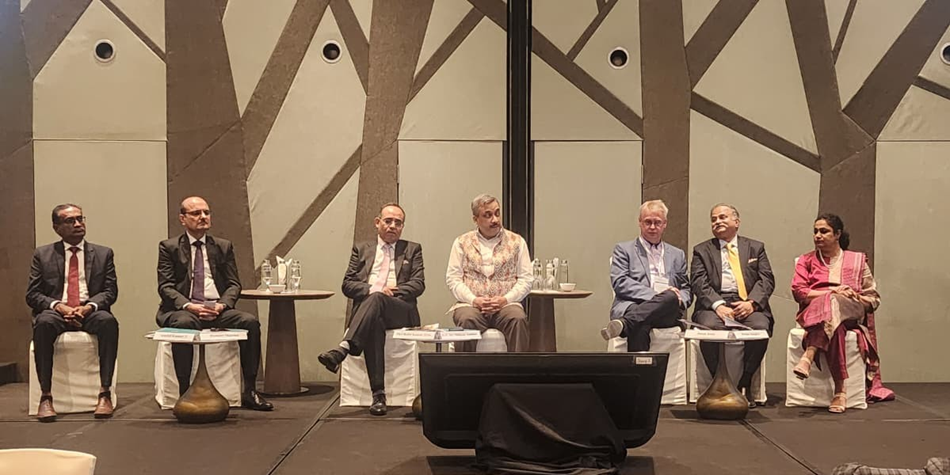FW
India's cotton exports have begun to pick up. For the first time this season ending September, Indian cotton became the cheapest in mid-February. Lower shipping charges to nearby destinations give the country an added advantage. Prices are at least five cents a pound cheaper than US cotton and two or three cents lower than African cotton.
Demand from China is almost nil but there have been enquiries from Bangladesh, Pakistan, Turkey, Indonesia and Vietnam. China has not issued any additional import quota this year. It has been trying to reduce record stocks that have been built up over the last couple of years. China’s ending stock will account for 56 per cent of global inventory despite its efforts to cut it.
Currently ample cotton is available in India, while the US and Brazil have almost sold out their produce. However, exports from India since the beginning of the season ending September have been lower compared with the same period a year ago. Exports are estimated to be 58 per cent lower compared with last year.
Though exports are picking up, there is no danger of the domestic market being starved of supply. The practice of spinning mills in south India buying cotton from West Africa later in the season could also help keep prices on leash.
Bangladesh plans to create a new sponsoring authority to oversee the country’s textile mills, making it mandatory for them to be registered with it. All existing textile units, according to the proposed law, will require getting registered with the authorities for obtaining support from the government and other trade bodies including financial institutions. If a textile factory fails to get enlistment from the sponsoring authority, it will not be allowed to work with the enlisted one under sub-contracting arrangement.
Believing textile mills have been set up in an unplanned and scattered way, the country feels now it is time to bring those under a system since safety and environmental issues have now emerged as a major obstacle for the country in satisfying overseas buyers. Mill owners say they are not against enactment of the law but not all textile mills have the ability to set up effluent treatment plants and are capable of ensuring all types of compliance issues in their factories. They say the government should make a plan to provide the necessary technical and financial support to small and medium capital-based factories.
According to the draft act, if factory owners fail to enlist their factories with the sponsoring authority, then the factory owner might be awarded up to three months’ imprisonment or a fine.
Invista's brand Cordura is launching a new range of fibers designed primarily for the development of knitted and woven fabrics. The high tenacity polyester fiber range is air jet textured for enhanced abrasion resistance, tensile and tear strength.
Cordura fabric is known for its resistance to abrasions, tears and scuffs. Finished Cordura fabrics made using these qualifying fibers can be printed, laminated or used in uncoated forms and are suited for products such as luggage, upholstery and backpacks, footwear, military equipment, tactical wear, work wear and performance apparel, outdoor clothing, high performance sportswear.
Cordura Nyco and Cordura Denim fabrics designed for work apparel feature the same Invista T420 technology. These nylon 6,6/cotton blend fabrics offer the comfort benefits of cotton-rich fabrics combined with exceptional durability and are particularly suitable for those environments where working conditions are at their most harsh. Cordura Nyco fabric is based on an intimate blend of cotton and T420 nylon 6.6 fiber. It is said to offer comfortable durability in military and tactical uniforms while providing abrasion resistance and no melt no drip thermal protective performance.
These fibers will be displayed at the upcoming Techtextil trade fair for technical textiles and nonwovens, Germany, May 4 to 7.
www.cordura.com/
Textile mills in Tamil Nadu have started to use the shipping route, instead of road, to transport cotton from Gujarat. As against 1,200 containers of cotton transported by sea last year from Gujarat to Tamil Nadu, the volume this year increased to 2,600 containers till January. It is expected to touch about 4,400 containers by the end of this month.
The cost of transporting one bale of cotton by road from Gujarat to Tamil Nadu works out to nearly Rs 850. It is between Rs 640 and Rs 790 by ship. During the last three months, Southern India Mills’ Association (SIMA) has held discussions with the Indian National Ship Owners’ Association and the revised rates for transport by ship range between Rs 590 and Rs 730 for a bale of cotton. While one shipper is offering the service now, two more have expressed interest.
Some textile mills bring cotton from Gujarat by ship and even send return cargo (fabric or garments) to the northern states in the same container. SIMA had written to the Tamil Nadu chief minister, seeking steps to bring down the cost further. Most of the cotton from Gujarat or Maharashtra arrives at the Tuticorin port.
Tamil Nadu accounts for one-third of the textile business in the country and textile mills in the state account for 44 per cent of the total spinning capacity of the country.
An estimated one-third of Lesotho's textile and clothing production will be decimated if the African Growth and Opportunity Act (AGOA) is not renewed in September. Lesotho is a small landlocked country entirely surrounded by South Africa. It is the largest sub-Saharan African garment exporter to the US, accounting for 30 percent by value and 28 per cent by volume of exports from the region to America. About 80 per cent of the country’s textile and garment exports are US-bound.
Before AGOA, the Lesotho textile and clothing industry employed around 20,000 people, with South Africa and Europe being the principal export markets. In the years following the establishment of AGOA in 2000, the focus shifted to US and employment in the sector rose to 55,000. This has fallen back to 44,000 since the abolition of the World Trade Organization’s multi fiber arrangement (MFA), which sparked more intense competition from Asia.
Lesotho is the jeans capital of Africa, producing 26 million pairs of denim jeans annually. It also makes 70 million knitted garments a year.
Currently around 75 per cent of the industry’s investment is from China, Taiwan and Southeast Asia. While the early days of AGOA saw the development of poor quality temporary businesses, MFA abolition saw many of those players eliminated.
The Gandhigram Trust has plans to tap high-end natural dye textile market in the southern districts. To begin with, it will make available its natural dyed khadi saris and other textile materials through its sales outlets at Madurai and Dindigul.
The main objective of making natural dye saris in modern designs is to expand the market base and boost income of weavers and familiarise khadi products among the next generation. Already the trust has conducted a survey to study the changing preferences and tastes of young women with regard to colors and designs of saris. To give a new look to khadi textiles, the trust has roped in textile design experts and the Craft Council of India for production, marketing, support and training in weaving and designing.
Research is on to manufacture natural dyed khadi materials. All colors would blend easily with other colors in the natural dye yarn. But in chemical dyes, some colors would not match with some others. The trust plays a little with colors and uses only traditional designs for the border to give an aesthetic look to saris.
Khadi natural dye textile products were received well at the Natural Dye Bazaar organised in association with Cooptex in Chennai recently.
www.gandhigram.org/
Pakistan will impose a standard sales tax on cotton in the Budget 2015-16 with a view to generating about Rs 50 billion in revenue. Currently sales tax exemption is available on local cotton and a 5 per cent sales tax is applicable on the import of cotton. However, in the upcoming budget, the government has proposed imposition of sales tax on cotton.
The government has set a cotton target for the next season (2015-16) at 15.49 million bales against the revised target of 13.48 million bales for the outgoing season (2014-15). The government had set an initial target of 15.1 million bales for the current season (2014-15). However, later the target was revised three times to finally set at 13.48 million bales due to multiple issues including water shortage, rains/floods, and shortage of certified seed.
A notification grants exemption on import and supply of plant and machinery not manufactured locally subject to certain conditions. Sales tax was charged at a reduced rate of 5 per cent on such plant and machinery, subject to the same conditions.
Despite a slowdown in nonwovens, the global per capita consumption is expected to grow from 1 kg in 2011 to 2 kg by 2025. And nonwoven and nonwoven-based products find wide applications in personal healthcare, infrastructure, air and water purification and mobility.
A recent symposium on hi-tech application of nonwovens by the Indian Technical Textile Association (ITTA) in Mumbai recently focused on the challenges facing the segment and the opportunities in the global nonwoven industry; innovations: growth driver of nonwovens; and emerging opportunities in agro and hygiene applications.
The Indian Technical Textile Association is the only association of technical textile industry which represents the technical textile value chain including raw materials, finished goods producers, consultants, machinery manufacturers, centers of excellence and R&D institutes.
The association has a membership of over 200 companies. The objective of ITTA is to promote, support, develop and increase the production, consumption and export of technical textiles. It wants to make India a powerhouse of technical textiles. To support and empower technical textile manufacturers and suppliers, ITTA has close interaction with the government of India and helps it in formulating policies to remove ambiguities in the system. ITTA is fully dedicated to its members’ success and aims to become the sole voice of the Indian technical textile industry to bring together all stockholders of the sector under one roof.
www.ittaindia.org/
Bangladesh is fast turning into a major source of denim products as international retailers prefer the country to other destinations for its low prices. Bangladesh manufacturers are also increasing their production capacities because of the higher demand from foreign customers.
Denim will play an important role in raising exports of Bangladesh, which is already the second largest garment exporter worldwide after China. Currently, 25 denim factories are operating in Bangladesh. Five new companies have also been set up.
International retailers are coming in with increased volume of work orders, thanks to low prices. Among the global players in the $60 billion denim market, Bangladesh lags behind China, the US, Italy and some Latin American countries. Denim is expected to contribute around $2 billion to the country’s garment export target of $50 billion by 2021.
There has been a shift in work orders from China to Bangladesh. China is losing out on its denim business due to high costs of production and a shortage of workers. Bangladesh’s share in the global denim market stands at about one $1billion. Local denim factories produce around 20 million yards of the fabric a month, meeting half of the local consumption. The rest is imported.
India is mulling a 10 per cent cap on the volume of cotton to be exported. The proposal is to put a 10 per cent cap on the amount of exportable cotton per year and a 10 per cent duty on the export of cotton over and above this exportable surplus.
The reasoning is that this is in line with the budget proposal to save domestic industry by building a cotton reservoir. But this move raises doubts as the country is heading for surplus stocks amid an export scenario hurt by China’s import policy.
India exports nearly 60 per cent of its cotton to China, the world’s largest importer, which has a stockpile of nearly 63 million cotton bales. Due to China’s decision to offload its substantial stock of cotton, the market demand is lower than supply. This has resulted in prices of cotton coming down.
Cotton exports from India into China declined 26.4 per cent year on year over April-October 2014 compared to a 4.3 per cent decline the year earlier. Lower global cotton prices and the relatively stable Indian rupee will keep the attractiveness of Indian cotton under pressure in the export market. India’s cotton exports to other destinations are unlikely to replace the quantum of lower trade with China.

